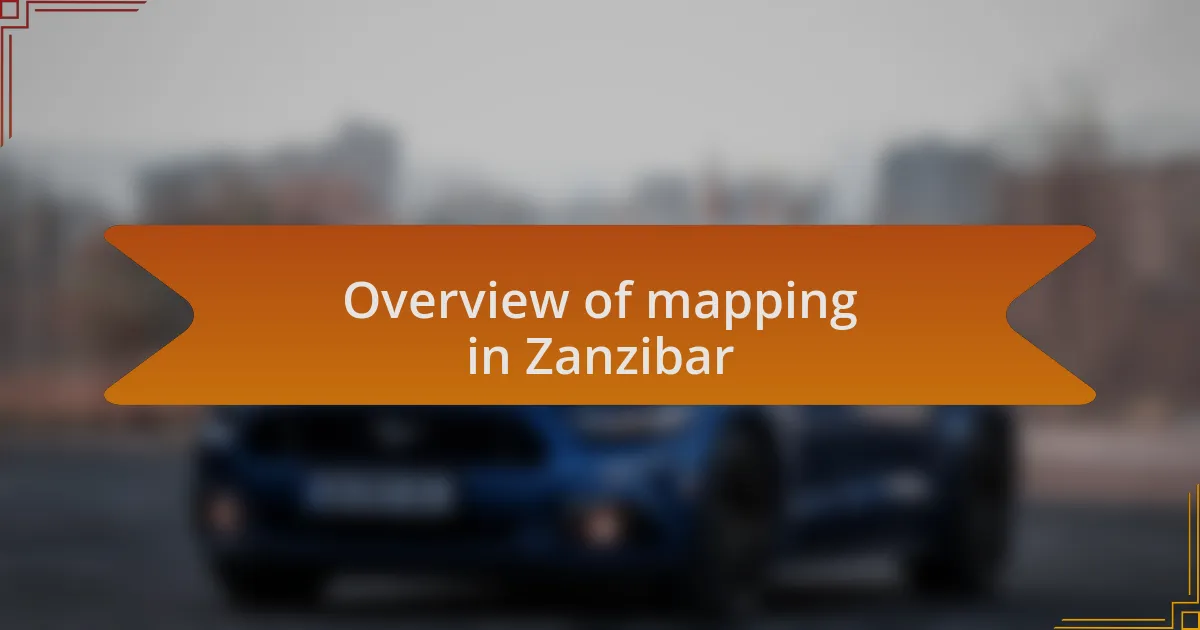Key takeaways:
- Drone mapping technology combines high-resolution cameras and GPS for accurate geographical data collection, allowing for the quick production of detailed maps.
- In Zanzibar, drone mapping serves not only to capture geographic data but also to preserve cultural heritage and tell the stories of the land and its people.
- Mapping in Zanzibar highlights the challenges of urban planning, especially regarding the balance between development and environmental sustainability.

Understanding drone mapping technology
Drone mapping technology has transformed the way we capture and analyze geographical data. The precision these drones offer is truly incredible; I remember the first time I saw a detailed 3D model created from aerial images. It was like unveiling an intricate puzzle that was previously hidden from view.
At its core, drone mapping combines high-resolution cameras and sophisticated software to create accurate maps and models. Have you ever thought about how these tiny flying machines can survey vast areas in just hours? It’s fascinating to me how a single flight can collect gigabytes of data to produce detailed topographic maps that were once time-consuming and labor-intensive to create.
The integration of GPS technology enhances the accuracy of drone mapping, allowing for precise data collection. I still recall assisting on a project where the difference between drone data and traditional methods was astonishing. The drone provided insights that not only saved time but also revealed nuances in the landscape that we hadn’t even considered.

Overview of mapping in Zanzibar
Zanzibar has a rich and complex cultural landscape, making it an intriguing area for urban mapping. As I explored the streets of Stone Town, I often wondered how the intricate layout of narrow alleys and historical structures could be accurately captured. The use of drone mapping here not only provides clarity but also preserves the heritage of these iconic locations.
In many instances, I’ve noticed that mapping in Zanzibar isn’t just about creating geographic data; it’s about storytelling. Each map tells a story of the land, its people, and their way of life. One project I participated in involved mapping local water sources, which opened my eyes to how essential these resources are to the communities. Seeing the maps displayed the reliance of families on these water spots gave me a deeper appreciation of the work we were doing.
Moreover, the mapping process can highlight the challenges faced by urban planners in Zanzibar. For example, I vividly recall mapping environmental changes along the coastal areas. The stark contrast between old and new development was stark, and it raised questions about sustainable growth. How do we balance urban expansion with preserving the local environment? The answers lie in the details we uncover through mapping efforts.